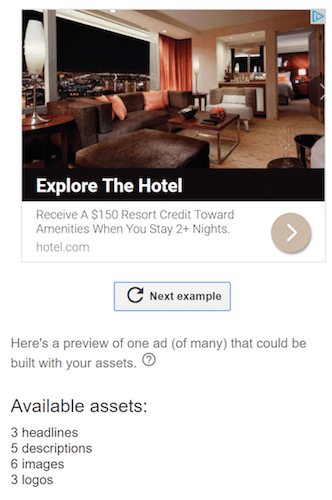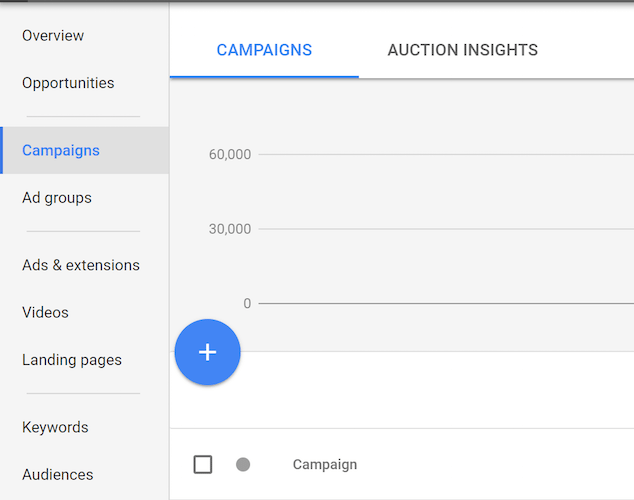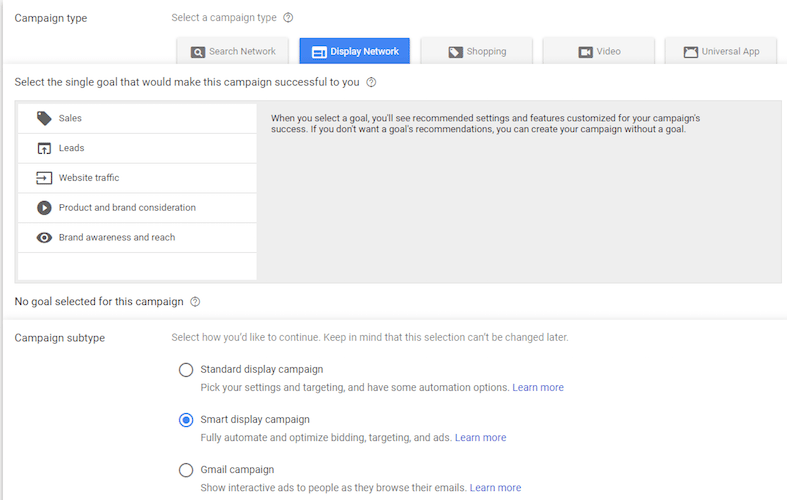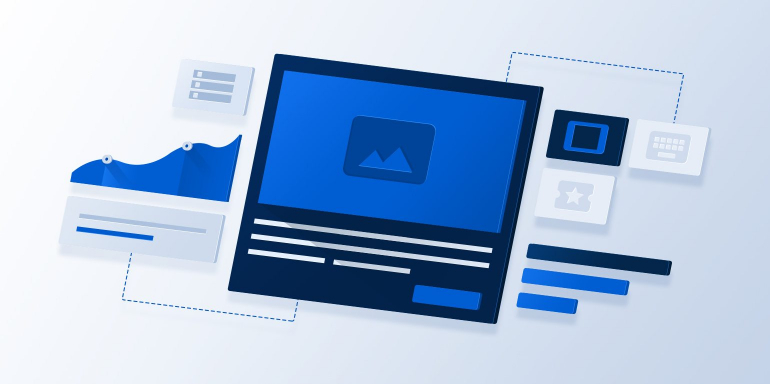It seems like each week Google Ads rolls out a new tactic on the Display Network, tempting all digital advertisers to allocate ad spend to the latest and greatest feature. Clients and advertisers alike are often skeptical for a variety of valid reasons: the aesthetic of ad types, last click attribution models, etc.
Yet ears perked up when Google released a new campaign type in Spring 2017. What if advertisers could essentially set it and forget it while Google does all of the work in optimizing your display campaigns? (Insert lots of agency eye rolls.) Appropriately named, in come Smart display campaigns.
What are Smart display campaigns?
Google Smart display campaigns run on the display network with a few requirements from the advertiser:
- Daily budget
- Target CPA
- Creative assets
Compared to other GDN campaign types, it takes a fraction of the time to launch and hardly any time to optimize. This is because everything auto serves based on a mysterious ton of information that nobody has any visibility into. Maybe it’s in the cloud… Kidding!
It’s automation, automation, automation. On target CPA bid strategy, Smart campaigns work to generate as many conversions as possible at your desired CPA. Keep in mind this desired CPA needs to be set within 15-20% of where your average CPA on GDN or SEM falls currently.
How targeting works
Targeting is automated to serve your ads where you will generate the most conversion volume, but Google doesn’t shed any light on exactly where that is. This is the kicker for advertisers driven crazy by the black box. Smart campaigns have no performance metrics available by placement, device — you name it. The advertiser is unable to make any changes to the delivery of ads.
Speaking of ads — they are also automated. You upload the assets: headlines, descriptions, logos, and images. The Smart ad will auto upload in different formats with its selection of these assets based on what it feels will perform best (mock ad preview in the next section below).
Smart campaign ads
Smart campaign ads are unlike any other. What most paid search marketers are most surprised by is the fact that you only need one ad to run. This goes against everything we as advertisers practice, typically rotation in 2-3 ads per ad group.
In these campaigns, you can upload assets into one ad template and Google serves different looking ads in text, image, and native formats. This auto serving method is supposed to take into consideration CTR and CVR — learning as they go. Below are the assets required and an example of what it looks like in the Google Ads UI:
- Headline (add up to 5): 25 characters
- Description (add up to 5): 70 characters
- Image: 1200px x 628px
- Logo: Square image up to 1200px x 1200px

Pros and cons: When should I consider testing Smart campaigns?
This may be one of Google Ads’ latest and greatest updates, but its value has been proven as more of an addition on top of existing GDN efforts. You will see stronger performance as a result of GDN remarketing and potentially even other prospecting tactics.
(Note: This is not a campaign to launch on your first stab at the Google Display Network. However, if you are successfully running other go-to tactics, Smart campaigns are a great way to generate additional traffic and conversions alongside them at a reasonable CPA.)
Pros
Minimal optimizations required
- You only have control over your target CPA bid and your creative assets.
- To change volume or efficiency, you simply adjust tCPA, which makes this campaign very low maintenance in comparison to others.
- All location, device, audience targeting etc. is taken into consideration on the back end with the algorithm. In fact, any modifiers that you implement will be ignored by Google for Smart campaigns.
Qualified customer mining
- In addition to other GDN tactics, this allows you to grow volume by trusting Google to go out and find new users with their unique algorithm.
- Unlike a lot of prospecting efforts, Smart campaigns guarantee your conversions at a certain cost per goal after the campaign has sufficient learnings.
Unlimited variety of ad formats & assets
- Smart ads auto serve based on the assets that are uploaded by the advertiser. For advertisers with a lot of variation in creative and messaging, this is a major plus because you save time managing individual ads. You can upload all of your assets into one ad and have them serve based on historical performance.
Cons
Minimal control over targeting and exclusions
- Due to its black box nature, advertisers cannot choose who they are, or aren’t, targeting. This proves frustrating and sometimes unacceptable in some scenarios.
However, Google has recently allowed Smart campaigns to be lumped into account level exclusions. For example, if you have a list in the shared library of excluded placements, you can now add your Smart campaign to this list to avoid serving on undesirable sites.
Minimal insight into what’s working
- Just like you cannot see who is being targeted or how, you cannot know who your customers are or where they are coming from.
This is a roadblock for future strategy as advertisers like to gather learnings from their converters. Smart campaigns give you somewhat of an “unknown” batch of converters that cannot be identified by their behavior. This makes it difficult to pinpoint any fluctuation in performance. - The same goes for creatives, while you load all of your assets into one ad that auto serves, an asset report does not yet exist to inform you which images or descriptions are performing best individually.
Extended ramp up periods
- Smart campaigns take longer than other campaign types to gather sufficient data and perform steadily. For example, Smart campaigns can be in the “learning” phase for several weeks, while conversion volume can be minimal and clicks can be costly.
Who do Smart campaigns work best for?
These campaigns have historically performed better for lead gen clients who are trying to drive a large amount of non-committal conversions. For example, if you have a $10 CPA and just want people to fill out a lead form — great!
Additionally, they have proven less successful for ecommerce and high-value driven advertisers. So if you’re looking to implement Smart campaigns to get a user to book a luxury suite, chances are you’ll have a much lower success rate.
What to keep in mind
It takes a couple of weeks at minimum for your campaign to exit the learning phase and begin delivering a CPA in range of your goal. This should be kept in mind for accounts with smaller budgets since a lot of advertisers cannot afford to wait out the learning phase. Budgeting in Smart campaigns is crucial because the more money you put into them, the smarter it gets. Funny how that works!
How to set up Smart display campaigns
Go to “+campaign” In the Google Ads UI like any other campaign you create:

Select the campaign type “Display Network”:

Select “Create Your Campaign Without a Goal” and then Select “Smart display campaign”:

From here you can proceed with the usual campaign setup by naming your campaign, setting a daily budget, etc. By selecting Smart display campaign in the initial setup, your campaign will automatically be on target CPA bid strategy and your new ads will be smart ads.
How to optimize the campaigns
You really only have a couple of options here (bittersweet). The primary optimization to make is a target CPA adjustment. Smart campaigns tend to be more efficient with more volume. Therefore, if you have room in your budget you can increase tCPA.
If your Smart campaign is spending beyond your budget, you can lower tCPA. The thing to remember is to make your target CPA adjustments by only 15-20%. Any adjustments more drastic will shock the system and the algorithm will likely be unable to get on track. Try to space out your tCPA adjustments, i.e. give each one a few days to learn. Of course you can also adjust your daily budget if your CPA is coming in exactly where you want it!
The second optimization is a refresh of creative assets. If you have been running with the same few assets. Try adding more variation into your ad’s assets and monitor CTR.
About the author
Sara is a Paid Search Account Manager at Elite SEM in the Atlanta office where she has worked for 2.5 years. She attended the University of Florida (Go Gators!) and has an affinity for the Google Display Network above all things digital marketing.
